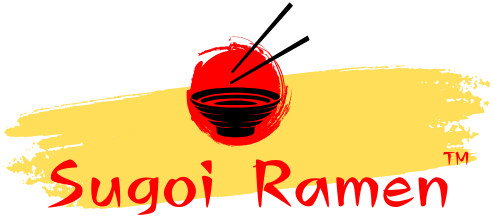Ramen is more than just a dish—it’s a cultural experience that has captivated food enthusiasts globally. This iconic Japanese noodle soup is a harmonious blend of flavors, textures, and aromas. To master ramen, understanding its essential components is critical. In this comprehensive guide, we will uncover the essential ramen ingredients and share expert tips for crafting the perfect bowl of ramen at home.
The Building Blocks of Ramen

1. The Noodles
The foundation of any ramen bowl lies in its noodles. Authentic ramen noodles are made with a combination of wheat flour, water, salt, and a unique ingredient called kansui—an alkaline mineral water that gives the noodles their signature chewy texture and yellowish hue.
- Types of Ramen Noodles:
- Thin, straight noodles: Ideal for light broths like shio or shoyu.
- Thick, wavy noodles: Best paired with rich and creamy broths like tonkotsu or miso.
Tip for Perfect Noodles:
Cook your noodles separately from the broth to prevent them from soaking up too much liquid. Rinse them under cold water to stop the cooking process and maintain their chewiness.
2. The Broth
The soul of ramen lies in its broth. Ramen broths are simmered for hours, combining deep umami flavors with a luxurious mouthfeel. The key types include:
- Shoyu (Soy Sauce): A light, savory broth made with soy sauce.
- Shio (Salt): The simplest and lightest broth, seasoned primarily with salt.
- Miso: A robust and nutty broth made with fermented soybean paste.
- Tonkotsu: A creamy and rich pork bone broth simmered for up to 12 hours.
Essential Ingredients for Broth:
- Pork bones or chicken carcasses for richness.
- Kombu (dried kelp) and katsuobushi (bonito flakes) for umami.
- Aromatics like garlic, ginger, and onion for depth.
Pro Tip:
Strain the broth thoroughly to achieve a silky texture. A clear broth enhances the presentation and mouthfeel of the dish.
3. Tare (Seasoning Sauce)
Tare is the seasoning concentrate that forms the backbone of ramen’s flavor profile. Each type of ramen broth begins with a base of tare, which is typically made from soy sauce, miso, or salt, combined with ingredients like mirin, sake, and dried fish.
Key Tare Variations:
- Soy Sauce Tare: Adds a savory and slightly sweet flavor.
- Miso Tare: Contributes a bold, earthy taste.
- Salt Tare: Offers a clean, delicate seasoning.
4. Toppings
Toppings elevate ramen by adding layers of texture and flavor. Popular ramen toppings include:
- Chashu (Braised Pork): Tender slices of pork belly marinated in soy sauce, mirin, and sake.
- Ajitsuke Tamago (Marinated Eggs): Soft-boiled eggs with a creamy yolk, marinated in soy-based sauce.
- Nori (Seaweed): Adds a subtle briny flavor.
- Menma (Fermented Bamboo Shoots): Provides a crunchy, tangy element.
- Green Onions: Brightens the dish with a fresh, oniony kick.
5. Aromatic Oils
Aromatic oils are the final touch that enhances the depth of the ramen broth. Common oils include:
- Sesame Oil: Adds nuttiness.
- Garlic Oil: Imparts a smoky flavor.
- Chili Oil: Provides a spicy kick.
Pro Tip:
Drizzle aromatic oils just before serving for maximum fragrance.
Tips for Making the Best Ramen at Home

1. Plan Ahead
Ramen is a labor of love that requires preparation. Make your broth and tare in advance to save time on the day you serve it.
2. Use High-Quality Ingredients
Invest in authentic Japanese ingredients such as kombu, miso paste, and soy sauce to replicate the flavors found in ramen shops.
3. Perfect the Balance
Ramen is all about balance—harmonize the saltiness of the tare, the richness of the broth, and the chewiness of the noodles.
4. Garnish Strategically
Each topping should complement the flavors and textures of the dish. Avoid overcrowding the bowl to let individual ingredients shine.
5. Experiment with Flavors
Ramen is versatile, allowing you to experiment with regional variations or create your own signature style.
Common Regional Variations of Ramen

1. Sapporo Ramen
- Broth: Miso-based.
- Toppings: Corn, butter, and ground pork.
- Key Feature: Rich and hearty, ideal for cold climates.
2. Hakata Ramen
- Broth: Tonkotsu (pork bone).
- Noodles: Ultra-thin and straight.
- Key Feature: Creamy, collagen-rich broth.
3. Tokyo Ramen
- Broth: Shoyu-based.
- Toppings: Menma, spinach, and fish cakes.
- Key Feature: Light and balanced.
Ramen-Making Tools You’ll Need
- Stockpot: For simmering the broth.
- Ramen Strainer: To separate noodles from boiling water.
- Chopsticks and Ladle: For serving.
- Mandoline: To slice toppings uniformly.
Conclusion
Making ramen at home may seem daunting, but with the right ingredients and techniques, it becomes an enjoyable and rewarding process. By understanding the key components—ramen ingredients such as noodles, broth, tare, and toppings—you can create a bowl that rivals the finest ramen shops in Japan. Let your creativity shine as you customize your ramen to suit your taste preferences.
FAQ’s
Q1. What is the most important ingredient in ramen?
The broth is the heart of ramen, providing the dish’s depth and flavor.
Q2. How can I make my ramen broth richer?
Simmer the broth for extended periods and include collagen-rich ingredients like pork bones.
Q3. Can I make gluten-free ramen noodles?
Yes, you can use gluten-free flour alternatives like rice flour or purchase pre-made gluten-free noodles.
Q4. What toppings pair best with miso ramen?
Corn, butter, and ground pork are classic miso ramen toppings.
Q5. How do I store leftover ramen ingredients?
Store the broth, tare, and noodles separately in airtight containers in the refrigerator for up to three days.






